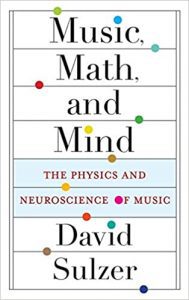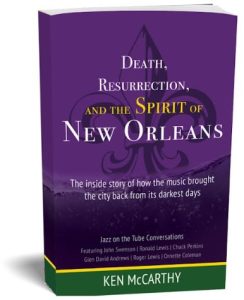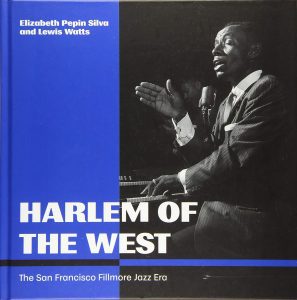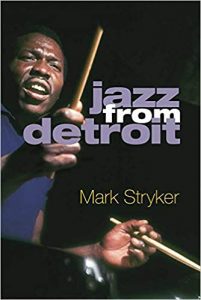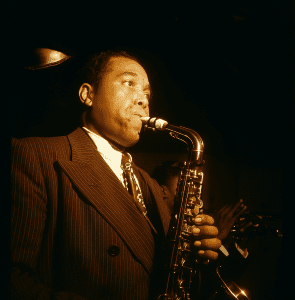Artist-Educators, Blog, Chroniclers, Podcasts, Producer-Presenters
Download the mp3 here
You can order the book “Music, Math and Mind” from you local independent bookstore or online here.
You can learn more about Dave’s music here: DaveSoldier.com
References
“Puerto Rico” – Eddie Palmieri
“Jeleo” – Steve Beck, composed by Dave Soldier
Bo Diddley on the Ed Sullivan Show (1955)
Stuff Smith’s Unfinished Concerto arranged by Dave Soldier, played by Miranda Cuckson
Work with children
Da Hiphop Raskalz
San Mateo Ixatan, Guatemala
“Osage Stomp” and “Get with It” – Bob Willis and the Texas Playboys (1935)
Hezekiah Leroy Gordon “Stuff” Smith (1909-1967) – Toured Texas extensively in the ’20s
Ramblin’ – Ornette Coleman (Texas) with Charlie Haden (Missouri) and Don Cherry (Oklahoma) (1959)
BONUS
As I mentioned in the interview, we were only going to be able to scratch the surface of Dave’s work on this call. One areas he’s done work in is exploring the musicality of animals. If they can recognize and make music, we may need to recalibrate how we view and treat them.
“Rain” – Elephant Orchestra. Instruments built and directed by Richard Lair and Dave Soldier in Lampang, Thailand (2006)
You can order Dave’s book “Music, Math and Mind” from you local independent bookstore or online here.
– Ken McCarthy
Jazz on the Tube
P.S. Our unique programming is made possible by help from people like you. Learn how you can contribute to our efforts here: Support Jazz on the Tube
Thanks.
Music credit: The Jazz on the Tube podcast theme song is “Mambo Inferno” performed by The Manhattan School of Music Afro-Cuban Jazz Orchestra conducted by Bobby Sanabria from the CD ¡Que Viva Harlem!
Artist-Educators, Chroniclers, Jazz on the Tube Interview, Podcasts
Remembering Eddie Durham with Topsy Durham
Recollections with Eddie’s daughter Topsy
Download the mp3 here
Jazz on the Tube is declaring 2020 the “Year of Eddie Durham.”
If you don’t know Eddie Durham (1906-1987), buckle your seat belts. He’s one the the secret sources of the music we call jazz.
Take Eddie out of the equation and a whole lot of things that made jazz jazz would never have happened.
He’s easily one of the most important musicians in the history of jazz and therefore one of the most important musicians in the history of American music.
Whose careers were nourished by Eddie Durham’s genius?
How about these for starters?
The Oklahoma City Blue Devils, Benny Moten, Jimmie Lunceford, Count Basie, Charlie Christian, Lester Young, Glenn Miller – and this is just the short list!
Music referenced in this interview
Download the mp3 here
1. Moten’s Swing (1933) – (00:00)
2. Hittin’ the Bottle (1935) – (03:24)
3. Topsy (1937) – (06:24)
4. Good Morning Blues (1937) – (09:38)
5. Swinging the Blues (1938) – (12:26)
6. Countless Blues (1938) – (15:10)
7. Way Down Yonder in New Orleans (1938 – two takes) – (18:07)
8. Jumpin’ at the Woodside (1939) – (24:09)
9. In the Mood (1939) – (27:18)
Documentary about Eddie Durham by the Center for Texas Music History
– Ken McCarthy
Jazz on the Tube
P.S. Our unique programming is made possible by help from people like you. Learn how you can contribute to our efforts here: Support Jazz on the Tube
Thanks.
Music credit: The Jazz on the Tube podcast theme song is “Mambo Inferno” performed by The Manhattan School of Music Afro-Cuban Jazz Orchestra conducted by Bobby Sanabria from the CD ¡Que Viva Harlem!
The Annual San Marcos Texas, Eddie Durham Tribute Sponsored by the Calaboose African American History Museum
The secret creative “spark plug” behind the success of the Blue Devils, Jimmy Lunceford, Lester Young, Freddie Green, Charlie Christian and Count Basie. Arranger of Glen Miller’s “In the Mood” too!
Chroniclers, Jazz on the Tube Interview, Podcasts
Interview with Elizabeth Pepin and Lewis Watts
Download the mp3 here
The Fillmore played a big part in my life.
In 1967, as a seven year old I used to take my 5 year old brother to school and we changed buses at Fillmore and Geary. Public transit. Different times!
Later I lived on California and Fillmore from 1990 to 1998, a glorious time to live in San Francisco.
During that period, I built one of the world’s first online-only museums and it was dedicated to – of course – the history of Fillmore Street.
Every shred of Fillmore’s illustrious jazz history had been stripped away by that point, but bit by bit I reassembled what I could.
Then along came Elizabeth Pepin and Lewis Watts who began an ongoing multi-decade labor of love documenting one of America’s great African-American communities and what at the time was one of the hottest jazz scenes west of the Mississippi.
Their book – now in a brand new addition with 100 brand new pages of photos and text – is luscious.
You can’t understand the history of jazz without having a feel for the “scenes” that made jazz possible and this may be the best capture of a 1940s+ era jazz scene ever.
My fervent wish is that every “scene” find archivists, historians, and story tellers with the same passion and dedication as Pepin and Watts to capture their story while it’s still possible to talk with the people who lived it. This is not just important jazz history, it’s important American history.
A great book for every jazz lover.
– Ken McCarthy
Jazz on the Tube
P.S. Our unique programming is made possible by help from people like you. Learn how you can contribute to our efforts here: Support Jazz on the Tube
Thanks.
Music credit: The Jazz on the Tube podcast theme song is “Mambo Inferno” performed by The Manhattan School of Music Afro-Cuban Jazz Orchestra conducted by Bobby Sanabria from the CD ¡Que Viva Harlem!
Artist-Educators, Chroniclers, Jazz on the Tube Interview, Podcasts
Download the mp3 here
Mike’s website – www.mikevaccaro.com
CD store – www.mikevaccaro2.bandcamp.com
Mike on the music business – https://iclassical-academy.com/online-course-collections-music-career/
Eastman Winds – www.EastmanWinds.com
Besame Mucho
(Composed by Consuelo Velazquez)
Mike Vaccaro, Leader, Tenor Sax, Flute
Gerry Schroeder, Keys
Kevin Axt, Bass, ContraBass
Michael Higgins, Guitar
“Tiki Passillas”, Percussion
Anne Walsh, Vocals
Drums and Percussion
Chris Stevens, Marimba, Percussion
Tom Zink, Recordist
– Ken McCarthy
P.S. Our unique programming is made possible by help from people like you. Learn how you can contribute to our efforts here: Support Jazz on the Tube
Thanks.
Blog, Chroniclers, Jazz on the Tube Interview
Interview with Mark Stryker
Download the mp3 here
Jazz on the Tube interviews Mark Stryker, author of the book “Jazz from Detroit.”
I put an exclamation point on this one.
Why?
Because if you don’t know the Detroit jazz story, it’s going to shock you.
But don’t take it from me…
“There is no other city like Detroit: the musicians, the vibe, the people.” – Sonny Rollins
“No city has meant more to American musical culture than Detroit.” – Pat Metheny
You want names?
How about Donald Byrd, Wardell Gray, Paul Chambers, Ron Carter, Howard McGhee, Major Holley, Gerald Wilson, Alice Coltrane, Al McKibbon, Billy Mitchell, Geri Allen, Lucky Thompson, and Kenny Burrell.
And that’s the short list from just one Detroit high school.
– Ken McCarthy
Jazz on the Tube
P.S. Our unique programming is made possible by help from people like you. Learn how you can contribute to our efforts here: Support Jazz on the Tube
Thanks.
Music credit: The Jazz on the Tube podcast theme song is “Mambo Inferno” performed by The Manhattan School of Music Afro-Cuban Jazz Orchestra conducted by Bobby Sanabria from the CD ¡Que Viva Harlem!

